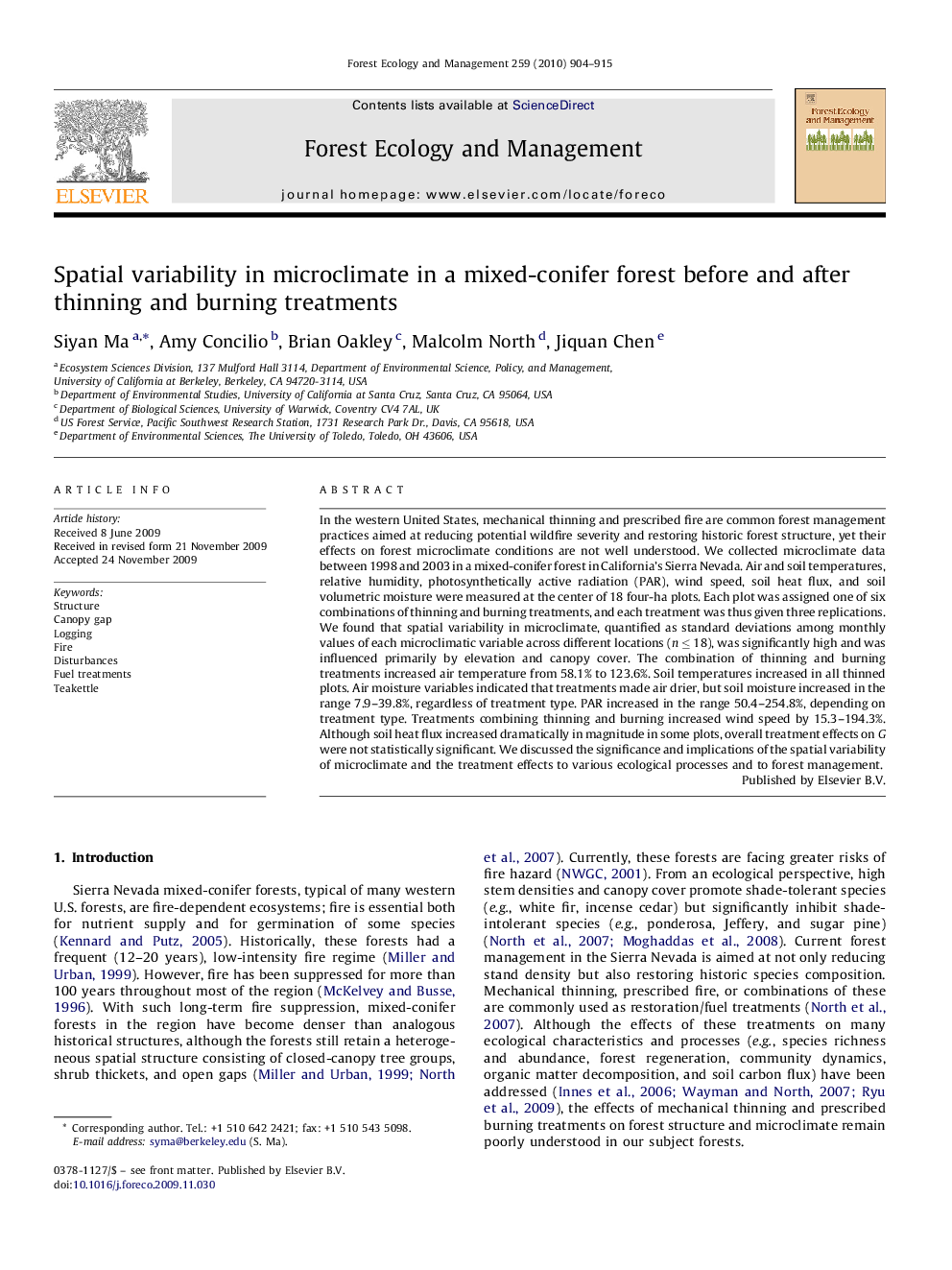| Article ID | Journal | Published Year | Pages | File Type |
|---|---|---|---|---|
| 88218 | Forest Ecology and Management | 2010 | 12 Pages |
In the western United States, mechanical thinning and prescribed fire are common forest management practices aimed at reducing potential wildfire severity and restoring historic forest structure, yet their effects on forest microclimate conditions are not well understood. We collected microclimate data between 1998 and 2003 in a mixed-conifer forest in California's Sierra Nevada. Air and soil temperatures, relative humidity, photosynthetically active radiation (PAR), wind speed, soil heat flux, and soil volumetric moisture were measured at the center of 18 four-ha plots. Each plot was assigned one of six combinations of thinning and burning treatments, and each treatment was thus given three replications. We found that spatial variability in microclimate, quantified as standard deviations among monthly values of each microclimatic variable across different locations (n ≤ 18), was significantly high and was influenced primarily by elevation and canopy cover. The combination of thinning and burning treatments increased air temperature from 58.1% to 123.6%. Soil temperatures increased in all thinned plots. Air moisture variables indicated that treatments made air drier, but soil moisture increased in the range 7.9–39.8%, regardless of treatment type. PAR increased in the range 50.4–254.8%, depending on treatment type. Treatments combining thinning and burning increased wind speed by 15.3–194.3%. Although soil heat flux increased dramatically in magnitude in some plots, overall treatment effects on G were not statistically significant. We discussed the significance and implications of the spatial variability of microclimate and the treatment effects to various ecological processes and to forest management.
